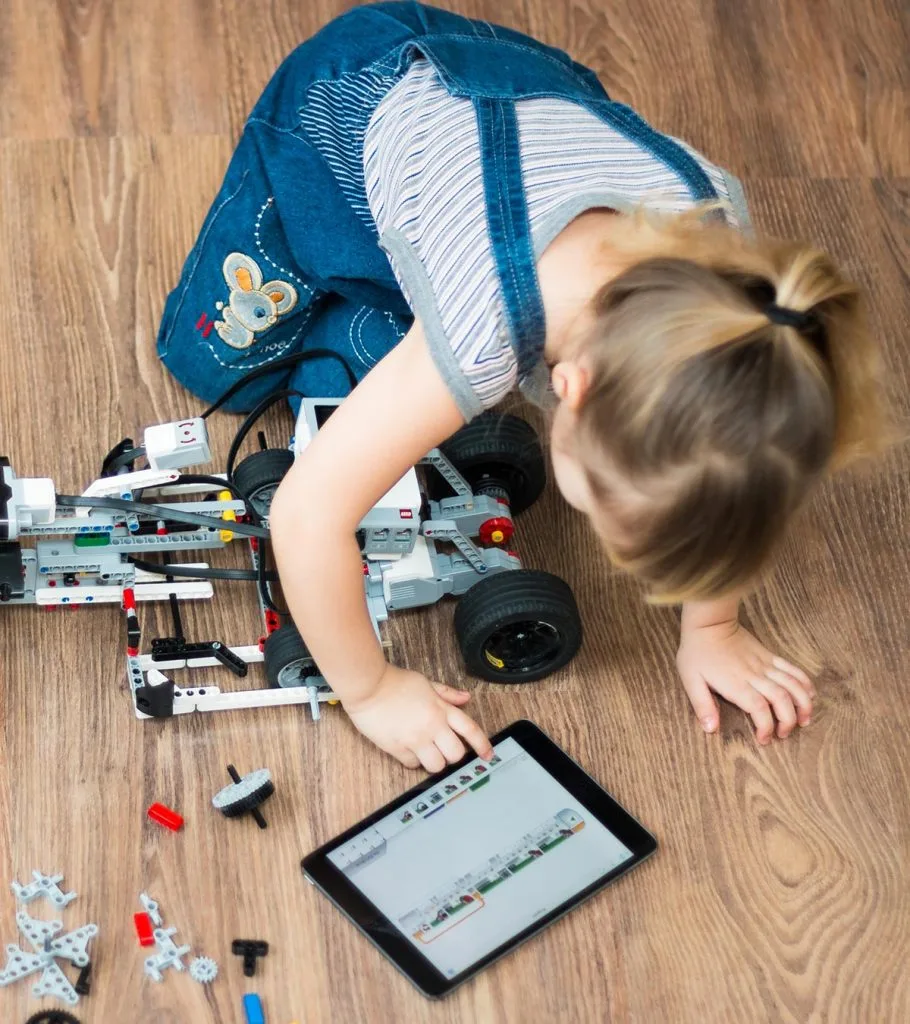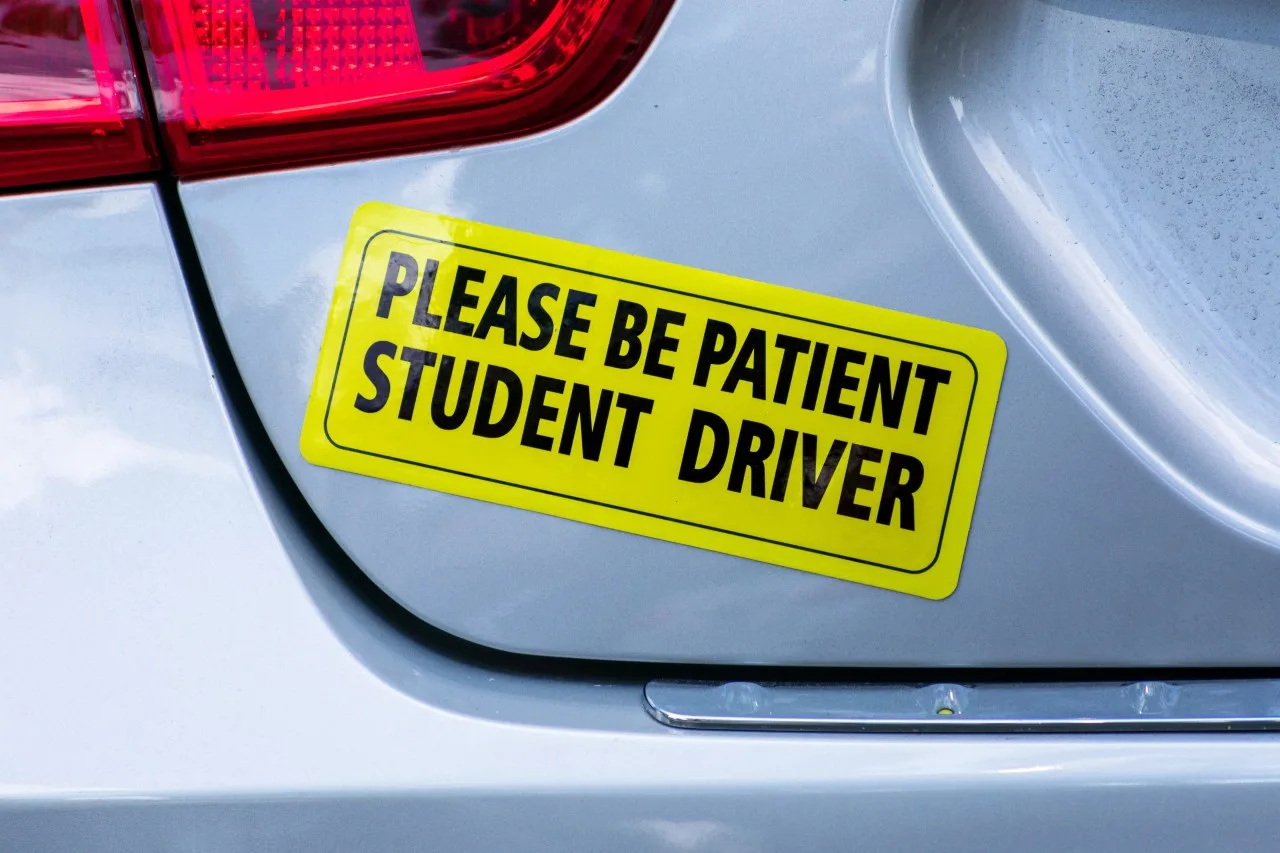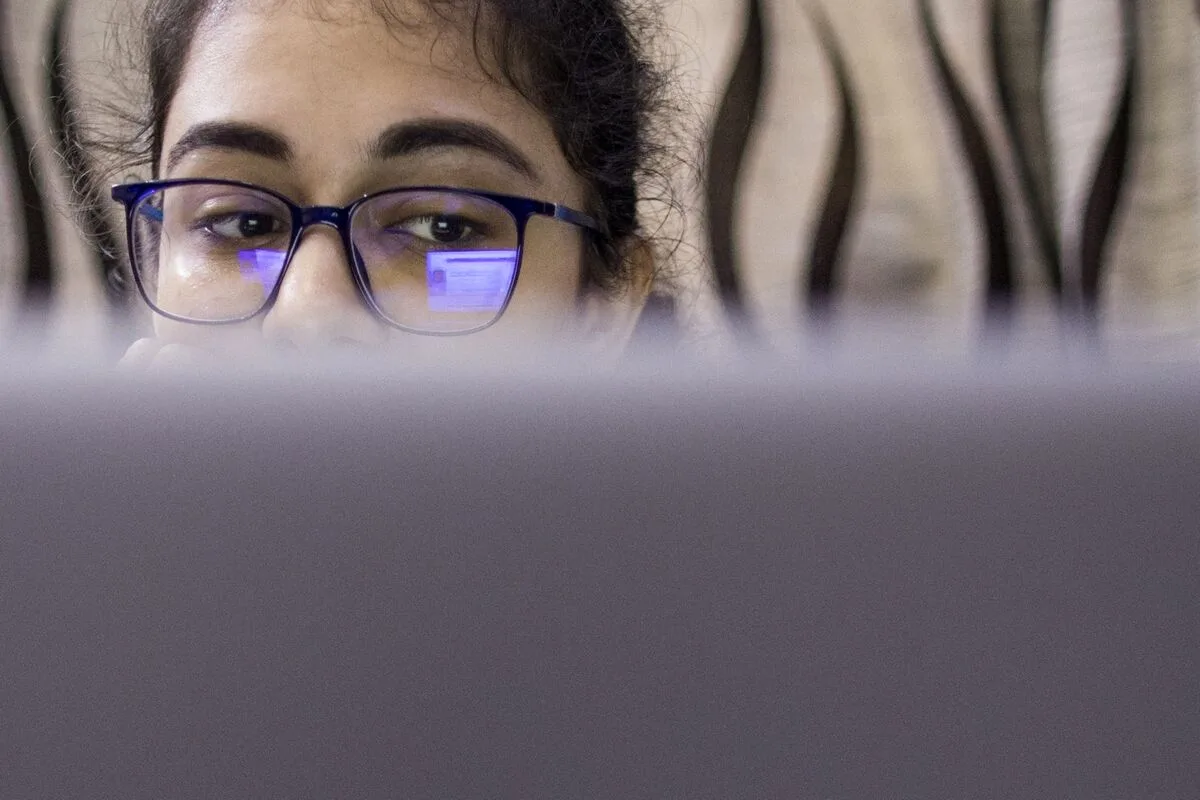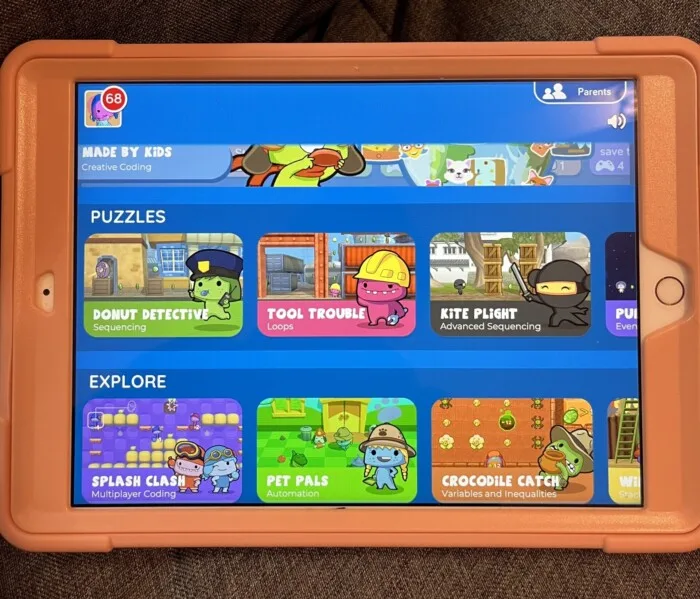Vision Pro health apps are changing medical care
Powerful new health and wellness apps take advantage of visionOS’s “infinite canvas” to use spatial experiences to improve patient outcomes in clinical settings and at home, Apple said Monday. It seems that Vision Pro health apps are changing medical care.
“We’re thrilled to see the incredible apps that developers across the healthcare community are bringing to Apple Vision Pro,” said Susan Prescott, Apple’s vice president of Worldwide Developer Relations. “The imagination and drive of our developers, combined with the technical capabilities of visionOS, are igniting new possibilities for physicians, frontline workers, and even students, and we can’t wait to see what’s to come.”
visionOS health apps benefit users through spatial experiences
Accordingly, Apple pointed out that medical institutions and developers have worked with products like iPad and iPhone for a long time. Apple gear has helped improve patient outcomes, increase efficiency, save money and supercharge research. Now it’s Vision Pro’s turn.
“Vision Pro seamlessly blends digital content with the physical world, unlocking powerful spatial experiences in an infinite canvas,” Apple said. “And with the unique capabilities of visionOS, healthcare developers are creating new apps that were not previously possible. [They] transform areas such as clinical education, surgical planning, training, medical imaging, behavioral health and more.”
In support of the premise, the iPhone giant listed some choice examples of healthcare and wellness apps.
Aiding behavioral health and wellness
Cedars-Sinai’s Xaia app (pictured above; watch a video demo) uses Vision Pro to support patients’ mental health. The app’s “trained digital avatar offers patients AI-enabled, conversational mental health support in relaxing spatial environments where they can also do deep breathing exercises and meditation.” The patient could be at home or somewhere like a beach. And privacy remains intact, as the app requires no patient information.
“Apple Vision Pro’s stunning display offers a gateway into a world of immersive, interactive behavioral health support — a quantum leap beyond previous technologies,” said Brennan Spiegel, MD, MSHS, professor of medicine, director of Health Services Research, and director of the master’s degree program in Health Delivery Science at Cedars-Sinai.
“With Xaia, we leverage every pixel of that remarkable resolution and the full spectrum of vivid colors to craft a form of immersive therapy that’s engaging and deeply personal,” he added. “With this remarkable device, our team was able to completely reimagine how spatial computing can support behavioral health and overall wellbeing in ways never before possible.”
And you can explore other behavioral health and wellness apps:
- The Mindfulness app on Vision Pro creates calm, immersive environments for users.
- TRIPP delivers illuminating visuals and Spatial Audio for guided breathing exercises and sleep experience.
- Healium helps Vision Pro users “relax and build resilience by creating stress-reducing memories of nature-based escapes.”
- Odio uses Spatial Audio and intuitive gestures to display 3D images for focus, relaxation or peaceful sleep.
Surgical planning and education with Vision Pro health apps
Apple pointed out Stryker’s new myMako app for the company’s Mako SmartRobotics hip and knee replacement surgeries. The app helps surgeons use Vision Pro and iPhone to extend their experience in and beyond the operating room for better surgical outcomes. It helps surgeons prepare by visualizing and reviewing patients’ Mako surgical plans through immersive visuals.
“The myMako app for Apple Vision Pro allows surgeons the ability to access intricate surgical plan details and insights at their fingertips in a 3D-native, intuitive, and dynamic way. This level of insight — anytime, anywhere — was previously not possible,” said Robert Cohen, Stryker’s president of Digital, Robotics, and Enabling Technologies.
“With Apple Vision Pro, Stryker’s market-leading enabling technologies such as Mako SmartRobotics have the exciting potential to transform the way surgeons think about preoperative planning and the intraoperative experience, all consistent with Stryker’s mission to make healthcare better.”
Virtual environments for training
Photo: Apple
In addition, Apple cited Boston Children’s Hospital’s CyranoHealth app. Its comprehensive learning experience in a virtual environment helps with onboarding and training of clinicians. This is especially helpful in prepping them for real-world use of new medical equipment.
“CyranoHealth utilizes spatial computing to revolutionize the training of healthcare professionals, offering immersive, lifelike simulations to enhance learning and combat burnout. The app represents a significant leap forward in healthcare training, blending technology and medicine to create a future-ready workforce,” said John Brownstein, Ph.D., Boston Children’s chief innovation officer.
And you can explore other surgical planning and education apps:
- Fundamental Surgery delivers surgical training through spatial computing.
- CollaboratOR 3D by KARL STORZ enhances surgical learning opportunities.
- Elsevier’s Complete HeartX “delves into … the human body to create a realistic and engaging learning environment.”
- Insight Heart helps users understand the human heart. With ARKit, they can scan physical surroundings and visualize 3D hearts using CT data.
Interactive holograms
Siemens Healthineers’ Cinematic Reality app for Vision Pro lets clinicians and patients see immersive, interactive holograms of the human body taken from medical scans.
So here’s Apple’s description of how it works:
Using Metal and the power of the M2 processor, the app integrates advanced path-tracing technology, simulating light interactions with virtual objects to deliver breathtakingly realistic lighting and reflections.
“Cinematic Reality gives people the opportunity to immerse themselves in a world of photorealistic renderings of the human anatomy,” said Christian Zapf, of Siemens Healthineers. “Apple Vision Pro perfectly presents that three-dimensional experience, combined with great flexibility and standalone use. We see great potential for the technology for clinical as well as educational purposes.”
Vision Pro health apps: Collaborative medical histories
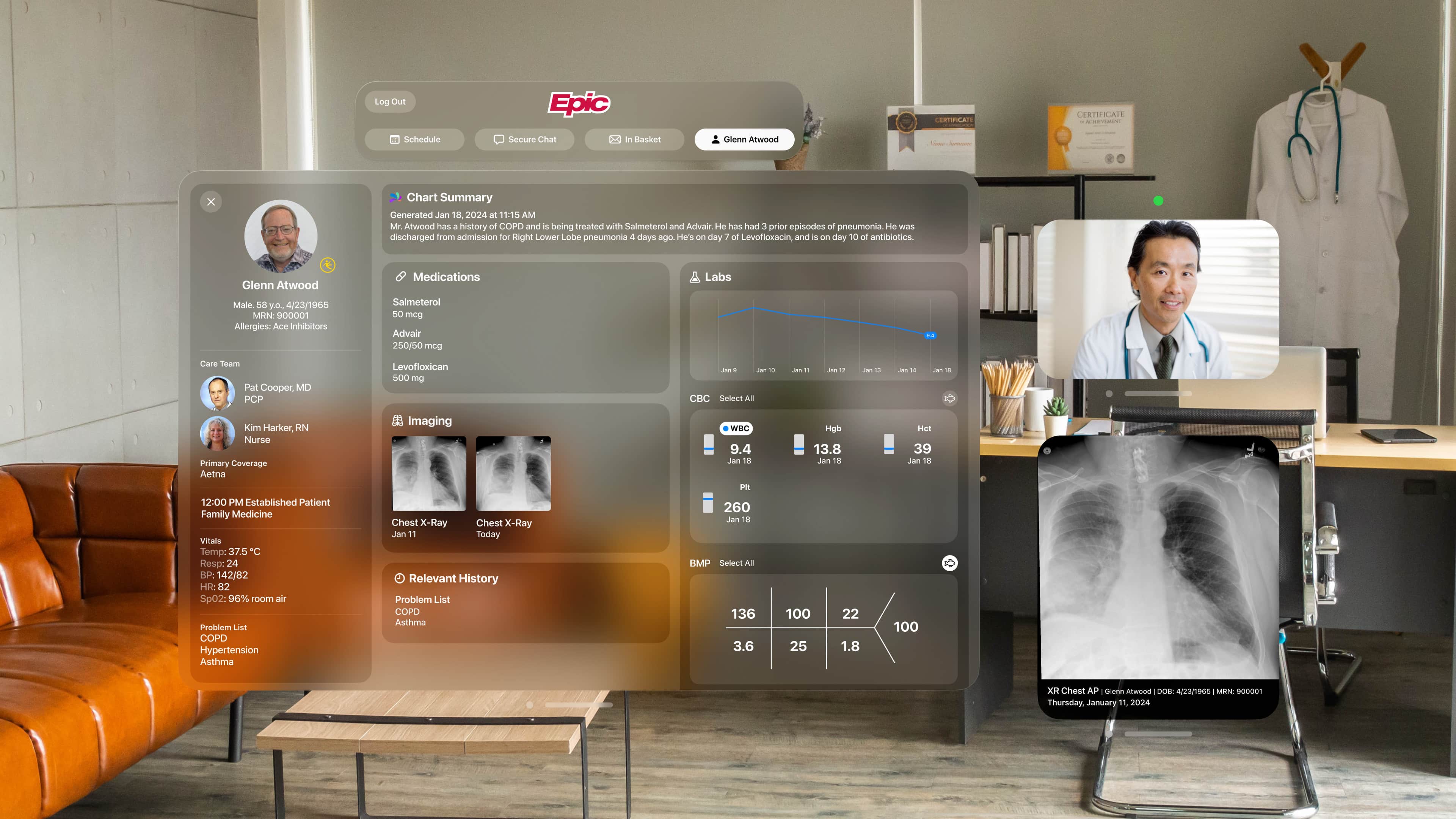
Photo: Apple
And another good example of an enhanced health app involves all-important medical records.
Epic Systems’ Epic Spatial Computing Concept for Vision Pro helps healthcare workers in various ways. They can “easily complete charting, review labs, communicate using secure chat, and complete in-basket workflows through intuitive gestures.”
“Creating the first electronic health record experience for spatial computing was an exciting project for our developers,” said Seth Howard, Epic’s senior VP of R&D. “With Apple Vision Pro, clinicians will be able to interact with their patients’ health information in new, immersive ways. We welcome ideas from the physician community about how this technology can expand the future of healthcare delivery.”
And you can explore other productivity and collaboration apps:
- Visage Ease VP supports immersive spatial experiences for diagnostic imaging and multimedia. UC San Diego Health became the first health system to pilot the technology t0 improve patient care.
- Falcon Vue unleashes the power of spatial medical imaging viewing.
- Medivis brings SurgicalAR Vision to Apple Vision Pro, enhancing medical imaging to support surgical precision.















